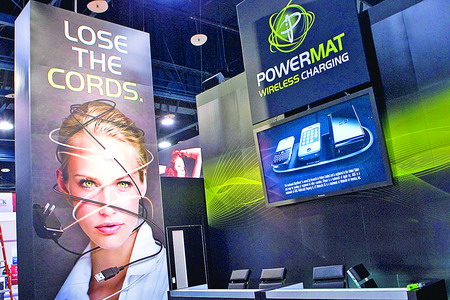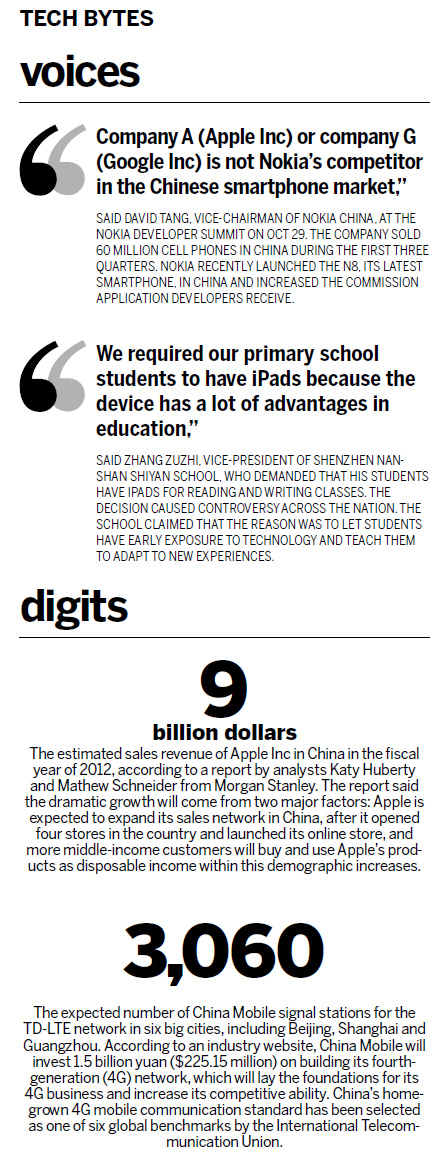Tech
Cutting off the power cables
By Tuo Yannan (China Daily)
Updated: 2010-11-05 07:47
 |
Large Medium Small |

|
 Powermat wireless charging stations are displayed during the 2010 International Consumer Electronics Show in Las Vegas. By cooperating with electronics manufacturers and telecommunications providers, analysts predict that the technology could become widespread in the near future. Vijay Paruchuru / Bloomberg |
Next-generation wireless chargers spell the end of high-tech tangles
BEIJING - Many people have had the experience of digging around in a tangle of wires to find the charging cable to your favorite electronic product. But industry experts said the latest technology will soon free us from cable lines.
Now that a global standard of wireless charging has been established, this new technology will be used in every sector of the IT industry in the next few years, said Menno Treffers, a senior director of standardization at Royal Philips Electronics Inc and chairman of the Wireless Power Consortium.
He forecast that by 2013, sales revenue of wireless products will reach an estimated $14 billion globally.
Wireless charging can already be found in the IT industry. Amway Corporation's "eSpring" water filter has been using this innovation since 2000. The unit was also the first commercial product to include sister company Fulton Innovations LLC's eCoupled wireless power induction technology.
Previously, customers had to deal with different types of chargers because charging technology lacked standardization.
Wireless charging technology uses inductive charging, which creates a small electro-magnetic field around devices to recharge their batteries.
Simply placing all your electronic devices on a palm-size pad, or on a table embedded with an electro-magnetic emission chip, will result in them charging automatically without wires.
The technology was not very hard to innovate, but standardization was a problem, said Bret Lewis, director of Fulton Innovation.
The Wireless Power Consortium finally solved the problem by creating a standard called "Qi", which was adopted by China on Aug 31.
Fulton Innovation has signed contracts with phone manufacturers and telecommunication carriers to put the theory and standard into practice.
According to Lewis, two wireless charging cell phones will be launched in the US market by the end of this year, and "30 percent to 40 percent of cell phones will use wireless charging technology within two years".
Wireless charging pads will become as ubiquitous as electrical plugs, enabling users to place their cell phone or laptop down on any pad for quick "snack charges", Lewis said.
According to an estimate from the technology research company, iSuppli Corporation, shipments of wireless charging devices will reach 250 million units in 2014.
"It's a promising technology, but the company has to convince more electronics manufacturers and telecom providers to use it," said Vincent Gu, a senior analyst from iSuppli.
"We are in negotiation with China Mobile," Lewis said. He added that the company wants to establish a business model that cooperates with telecom providers to promote wireless charging technology.
There are a few limitations with the technology at present, Lewis said.
Currently, the standard only can be adapted for a limited range (within 13 centimeters), but the company has already showcased a mid-range inductive power system designed to illuminate a 12 watt LED lamp from a distance of 89 cm.
Currently, the cost of the wireless pad is still high. The wireless charger costs about $100, but the company said the price will come down once the technology becomes widespread.
China Daily
